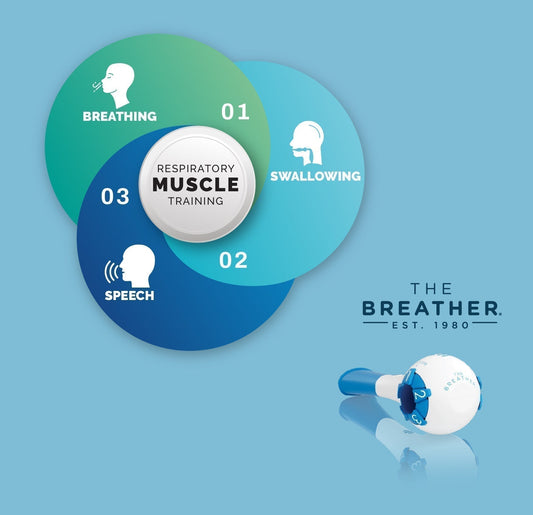Heart diseases are rising, killing 702,880 people in the US every year. While some of the factors that cause heart diseases are beyond our control, such as age and family history.
About 47% of Americans have at least 1 of 3 key risk factors for heart disease: smoking, high cholesterol, and high blood pressure. With age, cardiovascular disease risk increases due to high blood pressure and endothelial dysfunction.


Healthy lifestyle habits and smoking cessation can significantly reduce cardiovascular disease risk, but compliance is low.
Regular exercise is a key factor in preventing cardiovascular disease; however, less than 40% of midlife or older adults adhere to the recommended amount of weekly exercise due to barriers such as time constraints, facility access, mobility issues, financial constraints, etc.
There is, therefore, an unmet need for more appealing lifestyle habits with higher adherence and comparable benefits.
RMT strengthens breathing muscles and improves cardiovascular health
In a recent study published in the Journal of the American Heart Association (JAHA), Daniel H. Craighead and colleagues revealed such a magic bullet – Inspiratory Muscle Strength Training (IMST), during which the breathing muscles used for inhaling (inspiration) are strengthened by breathing against resistance [1].
This method, also known as respiratory muscle training (RMT), was pioneered 4 decades ago by PN Medical’s Peggy Nicholson, who invented THE BREATHER as the very first respiratory muscle trainer, strengthening both the muscles of inhalation and exhalation.


Originally invented to help patients with COPD, it soon became clear that building up respiratory muscles benefits a much wider community with respiratory, cardiac, speech, and swallowing problems.
While respiratory muscles may appear to mainly support breathing, they are also critical for a strong and healthy heart, safe swallowing, voice production, as well as for posture and balance. The diaphragm is the main breathing muscle and also serves as a postural core muscle, signifying it as one of the most important muscles in the body.
The research group looked at the impact of RMT on key factors for cardiovascular disease. Thirty-six participants from Boulder County, Colorado, aged 50 to 79, who had high blood pressure, were asked to perform 30 breaths of RMT twice daily, 6 days per week, for 6 weeks.
The intensity of this breathing muscle workout in the intervention group was set so the muscles worked at 75% of their maximum capacity while the control group worked at 15% of their maximum capacity.
After 6 weeks, the researchers found a list of astonishing improvements in the intervention group:
-
Inspiratory muscle strength (PImax) improved by 14% (9 mmHg)
-
Systolic blood pressure decreased by 7% (9 mmHg) from 135 mmHg to 126 mmHg
-
Diastolic blood pressure decreased by 3% (2 mmHg) from 79 mmHg to 77 mmHg
-
Endothelial function improved, measured by a 45% increase in the diameter of the brachial artery – greater artery diameters allow for better blood flow and circulation
The improvements in endothelial function were seen in men as well as post-menopausal women, independent of their hormonal status. This is in contrast to the benefits of aerobic exercise in this age group, which is effective in post-menopausal women using hormone replacement therapy but not in estrogen-deficient women.
RMT benefitted post-menopausal women of either group, highlighting another unique feature of this training modality.
RMT improves inflammation and cardiovascular biomarkers
Cardiovascular disease typically develops over a period of time and is based on an accumulation of contributing risk factors. Elevated blood pressure and compromised circulation lead to systemic chronic inflammation and the activation of reactive oxygen species.
These two key events weaken the immune system and support cell damage, which can have a cascade of downstream effects, including cancer.


The researchers of this study showed that participants in the high-intensity RMT group produced higher levels of a molecule called nitric oxide (NO), which helps to keep blood vessels dilated and reduces the activity of reactive oxygen species. Markers for chronic inflammation (C-reactive protein, CRP) were also reduced.
Importantly, when the researchers followed up on the outcomes 6 weeks after the participants had stopped RMT, they found that the benefits were still present, indicating that RMT has a long-lasting effect on physiology and cardiovascular health.
Furthermore, the compliance rate was reported at 95% of sessions completed, which is in stark contrast to the 40% compliance rate with aerobic exercise reported elsewhere.
Conclusion: RMT is an effective adjunct therapy for cardiovascular health
As cardiovascular disease is on the rise, every tool to fight this healthcare trend is precious. Aerobic exercise is a well-known and effective treatment to reduce the risk of cardiovascular disease.
Here, we provide multiple pieces of clinical evidence that show that RMT can also significantly contribute to lowering the risk of developing cardiovascular disease. While RMT is not meant to replace exercise, it can be a highly effective adjunct therapy.









